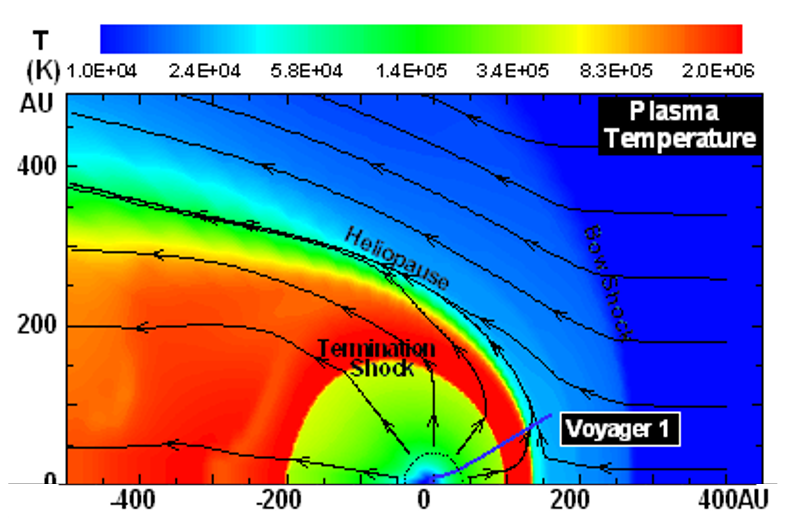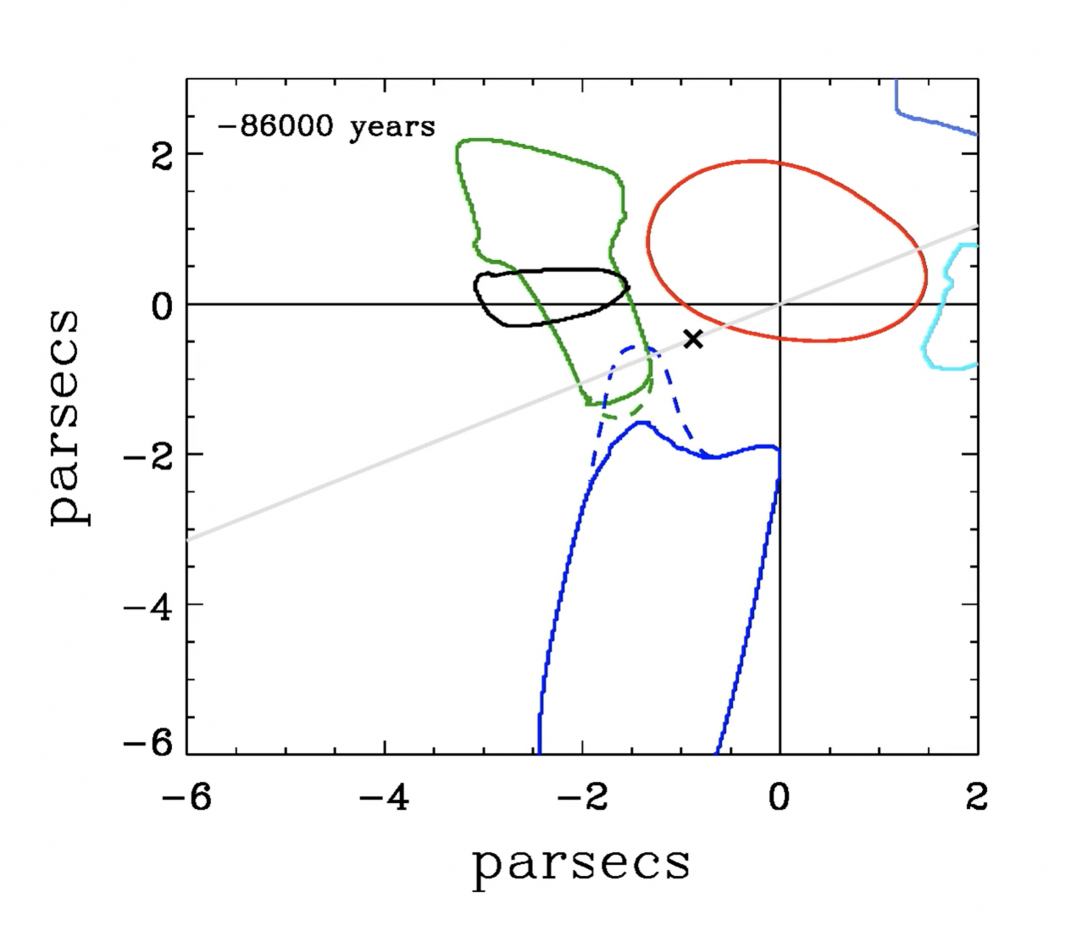Prof Jeffrey L Linsky from the University of Colorado Boulder, sheds light on exploring the next space frontier in this exciting astrophysical and planetary sciences focus
Beyond the planets, the solar system, and even the outer reaches of the solar wind lies interstellar space – the next domain that mankind can and will explore.
In addition to illuminating the Earth and solar system planets, the Sun’s ionized wind and magnetic field control a region of space extending to about 120 times the Earth’s mean distance from the Sun.
Beyond this distance of 120 Astronomical Units (AU) lies interstellar gas, dust, and magnetic fields called the local interstellar medium (LISM).
The composition of the LISM between the widely separated stars is only beginning to be studied. Analyses of high-resolution ultraviolet spectra obtained with the Hubble Space Telescope now find that typical densities of neutral hydrogen gas in the LISM of about 0.1 atoms per cubic centimeter, that is about 20 factors of ten less dense than the air we breathe from the Earth’s atmosphere. The LISM appears to be highly inhomogeneous, with a variety of structures with different densities and temperatures.
First steps in the exploration of the LISM
The two Voyager spacecraft have passed through the solar system at a speed of about 15 km/s, corresponding to 3.2 AU/yr, and are now well past the boundary called the heliopause at 120 AU that separates the magnetic fields of the Sun and the LISM. The Voyagers are now sampling the innermost region of the LISM. Here, hydrogen atoms from the LISM flow into the outer reaches of the solar atmosphere and interact with solar-ionized particles.
With their functioning instruments, the Voyager spacecraft are and hopefully for the next few years will measure local particle densities, energies and magnetic fields. Somewhere between 500 and 1,000 AU from the Sun, the Voyagers will enter the pristine LISM beyond the Sun’s sphere of influence.
Although the Voyagers will enter this region in 100-200 years, they will long since have run out of electrical power and will be located too distant to communicate back to Earth. They will be the first silent artifacts of our LISM exploration.
Our limited understanding of the LISM
Observations with Hubble, the Voyagers, other spacecraft, and ground-based telescopes now provide the beginnings of our understanding of the LISM. We know that the very low-density LISM is inhomogeneous with structures on various spatial scales. Within 30 light-years of the Sun, there are more than a dozen regions where the gas is flowing in somewhat different directions with different densities and a variety of temperatures. These regions are called clouds, but they differ from clouds in the Earth’s atmosphere because of their far lower densities, partial ionization, and temperatures of 5,000-10,000 K.
Recent observations show that the Sun and our solar system have just left one of these clouds, called the Local Interstellar Cloud (LIC), and are now entering an interface region between the LIC and another cloud called the G cloud in the direction of the Center of our Galaxy. (See Figure 1).

Astrophysics becomes Paleobiology
At a speed of about 26 km/s, the Sun is streaming through the nearby clouds. (See Figure 2) It entered the LIC about 60,000 years ago and left very recently. It is now possible to predict the path through these nearby clouds over the last 200,000 years and into the future for the same duration.
As the Sun traverses these clouds with their different densities and temperatures, the heliopause will expand or shrink to maintain pressure balance with the surrounding gas. Since we do not have accurate measures of the diverse pressures in these nearby clouds, changes in the distance to the heliopause are unknown.
There are dense cold regions of the Galaxy where the gas density is 100,000 times the density in the local clouds with correspondingly higher gas pressures. Should the Sun enter a dense cloud, the distance to the heliopause will shrink to only a few AU (see Figure 3). In this case, the shielding of very high-energy particles called cosmic rays provided by the solar magnetic field will be much weakened. As a result, the higher dosage of cosmic rays impacting the Earth would produce more mutations in human DNA with unknown consequences and could also change the Earth’s climate.
The last time the Earth passed through a dense cold cloud is estimated to be 2 million years ago when it passed through the cold cloud now in the direction of the constellation Leo. Future studies of the Sun’s passage through the LISM could provide insights into the cosmic causes of events in the past lifetime of human evolution.
What we do not know but could learn
Our present model of the LISM and the effects of the Sun’s trajectory through its complex structures and properties is very limited, with major uncertainties. We have never been able to measure the range of magnetic field strengths that may control the structures of nearby clouds. Not yet measured ionized particles may be a far higher contributor to pressures in the LISM than thermal gas. The origin of the cloud structure is a matter of dispute between theories of shock wave compression, thermal instabilities, magnetic structuring, and ionizing radiation from stars. To answer these questions, a spacecraft with suitable instruments must go there.
Are direct measurements of LISM properties by spacecraft feasible?
Recent and future rocket propulsion and instrument miniaturization improvements should permit faster escape speeds into the LISM. It is even possible that alternative propulsion methods, such as sails using solar radiation pressure or lasers, may become feasible. If a future spacecraft could leave the solar system at a speed of 30 km/s (6.4 AU per year), twice that of Voyager 1, then it could pass through the heliopause in only 19 years and pass into the pristine LISM in 80-160 years. This is a sensible goal.
Why explore the next space frontier?
Mankind has always explored beyond what is known for the joy and discoveries that such exploration could and historically has provided. Direct exploration of the LISM is the only way of answering questions about its composition and origin. Such exploration may also provide information on cosmic events that could have and may shape future evolution on Earth. Clearly, there are scientific and engineering challenges to exploring the LISM frontier.
Many of these are already being evaluated by detailed studies, such as the proposed Interstellar Probe mission (ISP) funded by NASA. The evolution of ISP studies could become the basis for an exciting international mission. Such a mission would have a long duration and significant returns.

This work is licensed under Creative Commons Attribution-NonCommercial-NoDerivatives 4.0 International.


